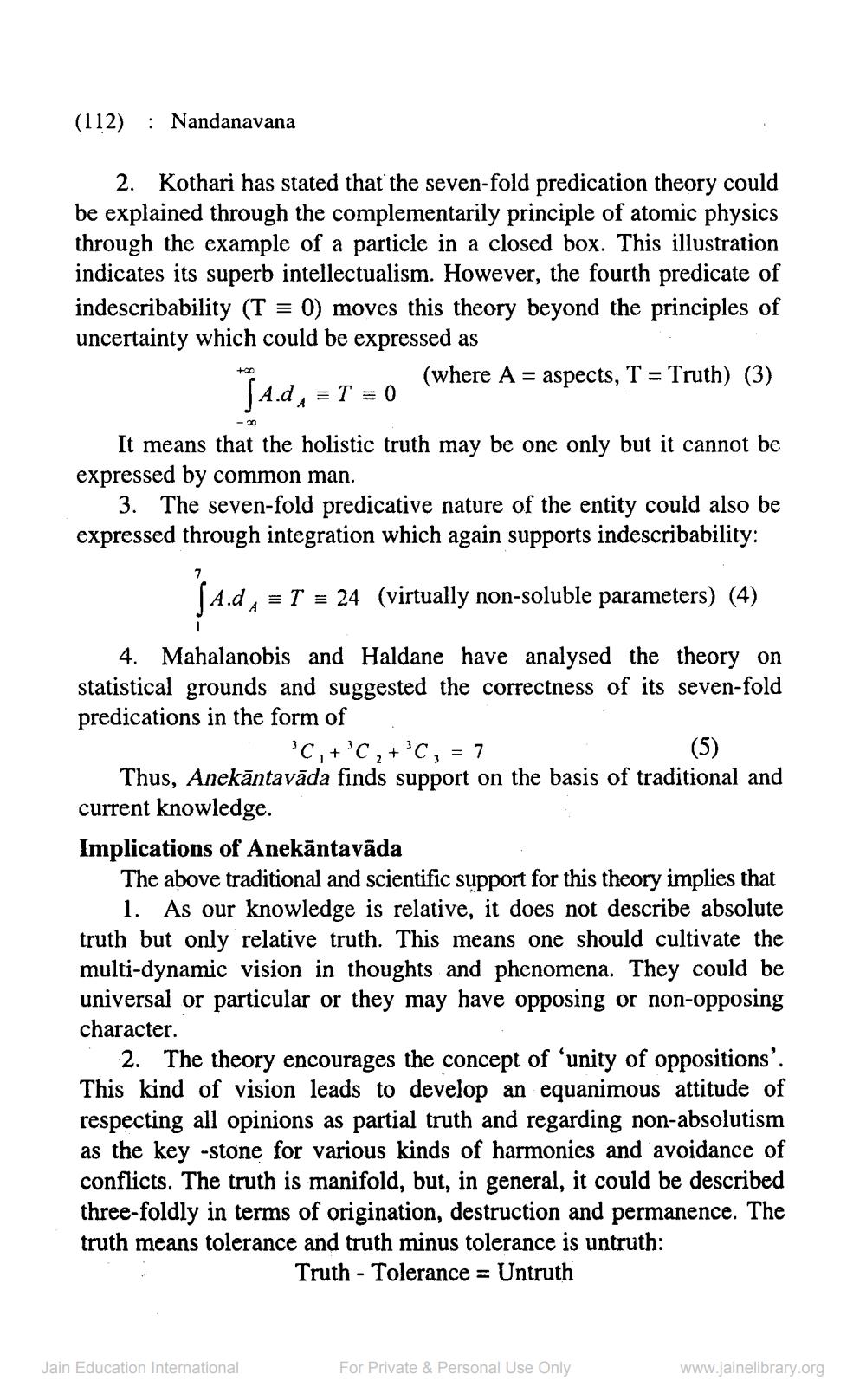________________
(112) : Nandanavana
2. Kothari has stated that the seven-fold predication theory could be explained through the complementarily principle of atomic physics through the example of a particle in a closed box. This illustration indicates its superb intellectualism. However, the fourth predicate of indescribability (T = 0) moves this theory beyond the principles of uncertainty which could be expressed as
(where A = aspects, T = Truth) (3)
+oo
SA.d
It means that the holistic truth may be one only but it cannot be expressed by common man.
3. The seven-fold predicative nature of the entity could also be expressed through integration which again supports indescribability:
7
SA.d A
= T = 0
= T = 24 (virtually non-soluble parameters) (4)
4. Mahalanobis and Haldane have analysed the theory on statistical grounds and suggested the correctness of its seven-fold predications in the form of
Jain Education International
'C1 + 'C2+ 'C1 = 7
(5)
Thus, Anekāntavāda finds support on the basis of traditional and current knowledge.
Implications of Anekantavāda
The above traditional and scientific support for this theory implies that 1. As our knowledge is relative, it does not describe absolute truth but only relative truth. This means one should cultivate the multi-dynamic vision in thoughts and phenomena. They could be universal or particular or they may have opposing or non-opposing character.
2. The theory encourages the concept of 'unity of oppositions'. This kind of vision leads to develop an equanimous attitude of respecting all opinions as partial truth and regarding non-absolutism as the key -stone for various kinds of harmonies and avoidance of conflicts. The truth is manifold, but, in general, it could be described three-foldly in terms of origination, destruction and permanence. The truth means tolerance and truth minus tolerance is untruth:
Truth Tolerance = Untruth
-
For Private & Personal Use Only
www.jainelibrary.org




